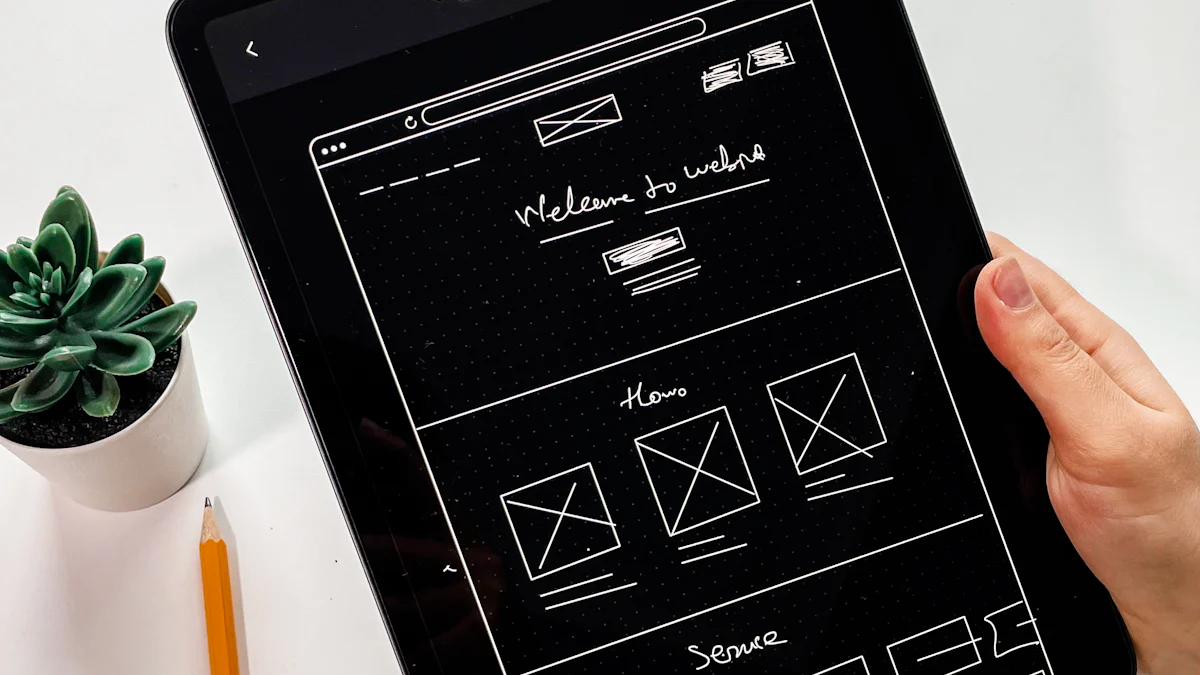
Artificial Intelligence (AI) is transforming the realm of UI design, offering novel avenues for innovation and efficiency. Designers can now leverage AI-powered generative tools (opens new window) to streamline their workflow and enhance user experiences. Staying abreast of the latest ui design tools is paramount in this dynamic landscape. The impact of AI on UI design is profound, with automated processes revolutionizing traditional methods. In this blog, we delve into key trends such as AI-powered generative tools that are reshaping the future of UI design.
# AI-Powered Generative Tools
When it comes to AI-powered generative tools, designers are presented with innovative solutions that revolutionize the UI design process. These cutting-edge tools leverage artificial intelligence to automate tasks and enhance creativity. Let's explore the capabilities of these tools in detail:
# Automated Wireframe Generation
Creating wireframes is a fundamental aspect of UI design, and UIzard stands out for its remarkable capabilities in this area. Designers can swiftly convert sketches into functional code, allowing them to focus on strategic decisions and unleash their creative potential. The benefits of automation extend beyond time-saving, empowering designers to refine their designs with precision.
# Real-Time UI Generation
The dynamic nature of UI design requires tools that can adapt in real-time. With features like dynamic design adjustments, designers can iterate rapidly and experiment with different layouts effortlessly. Various tools exemplify this capability, showcasing how AI algorithms can generate user interfaces on-the-fly based on evolving design requirements.
# Image Generation from Text
DALL·E (opens new window) plays a pivotal role in transforming textual descriptions into visual representations. This functionality has practical applications across various industries, enabling designers to visualize concepts quickly and efficiently. By harnessing the power of generative AI, creating images from text becomes a seamless process that fuels creativity.
# User-Friendly Interfaces
In the realm of UI design, Visily stands out as a beacon of innovation, offering designers a seamless experience that transcends traditional design processes. Let's delve into the features that make Visily a user-friendly interface:
# Simplified Design Processes
Visily's features:
Intuitive drag-and-drop functionality for effortless design creation
Real-time collaboration tools (opens new window) for enhanced teamwork dynamics
Robust library of pre-designed elements to expedite the design process
Ease of use:
Streamlined interface catering to both novice and seasoned designers
Customizable templates for quick project kick-starts
Automated suggestions for design improvements based on industry standards
# Customizable Themes
Theme generation from text:
AI-powered theme generator translating textual descriptions into vibrant themes
Personalized color palettes and typography options tailored to specific needs
Seamless integration with existing brand guidelines for cohesive designs
Pre-made themes:
Diverse selection of ready-to-use themes catering to various industries
Easily customizable elements to adapt themes to unique project requirements
Regular updates and additions to the theme library for ongoing inspiration
# No Learning Curve
Accessibility for beginners:
Guided tutorials and tooltips ensuring a smooth onboarding process
Interactive walkthroughs for fundamental design principles and tool functionalities
Community forums and support channels for immediate assistance
Professional results:
High-fidelity prototypes achievable with minimal design expertise
Advanced features empowering designers to create polished interfaces effortlessly
# Integration with Existing Software
When considering the integration of AI-powered generative tools with existing software, compatibility plays a crucial role in ensuring a seamless design workflow. Galileo AI (opens new window) offers a range of features that enhance its compatibility with popular design platforms like Figma:
# Galileo AI's Features
Streamlined interface for effortless navigation and tool accessibility
Advanced AI algorithms that optimize design processes and enhance productivity
Seamless integration with Figma, allowing for direct import/export functionalities without data loss or format discrepancies
# Export Options
Multiple export formats supported, including PNG, SVG, and PDF for versatile usage across different platforms
Customizable export settings to tailor the output to specific project requirements and client preferences
Automated export workflows that simplify the sharing process and ensure consistency in design delivery
When it comes to enhancing existing tools through AI integration, designers can leverage the benefits of advanced algorithms to elevate their design capabilities:
# AI Integration Benefits
Enhanced creativity through automated suggestions and intelligent design recommendations based on industry best practices
Improved efficiency by automating repetitive tasks and streamlining complex design processes
Increased accuracy in design implementation by leveraging AI-powered tools for precise measurements and layout adjustments
# Examples of Enhanced Tools
Incorporating AI-driven color palette generators to expedite color selection processes and ensure harmonious designs
Utilizing machine learning algorithms for predictive design analysis, identifying potential user experience improvements before implementation
Integrating smart grids powered by artificial intelligence to optimize layout structures and enhance visual hierarchy
Looking ahead, the future developments in AI UI design tools hold promising advancements that are set to redefine the industry landscape:
# Potential Advancements
Continued evolution of generative AI models for more sophisticated image generation capabilities and realistic visual outputs
Integration of virtual reality (VR) technologies into UI design tools, offering immersive prototyping experiences for designers and stakeholders alike
Collaboration with augmented reality (AR) platforms to explore innovative ways of integrating digital interfaces into physical environments
# Industry Trends
Shift towards personalized user experiences driven by AI algorithms that analyze user behavior patterns and preferences in real-time
Emphasis on ethical AI practices within UI design tools to ensure transparency, accountability, and fairness in algorithmic decision-making processes
AI's influence on UI design is profound, offering innovative solutions for efficiency and user-centric experiences.
Embracing AI as a collaborator enables the creation of personalized interfaces that exceed user expectations (opens new window).
By leveraging AI-powered sentiment analysis, designers can gather and analyze user feedback (opens new window) at scale swiftly.
AI should be seen as a tool that enhances human creativity rather than replacing it entirely.
Balancing the use of AI allows designers to optimize interfaces for intuitive (opens new window) and efficient user experiences.